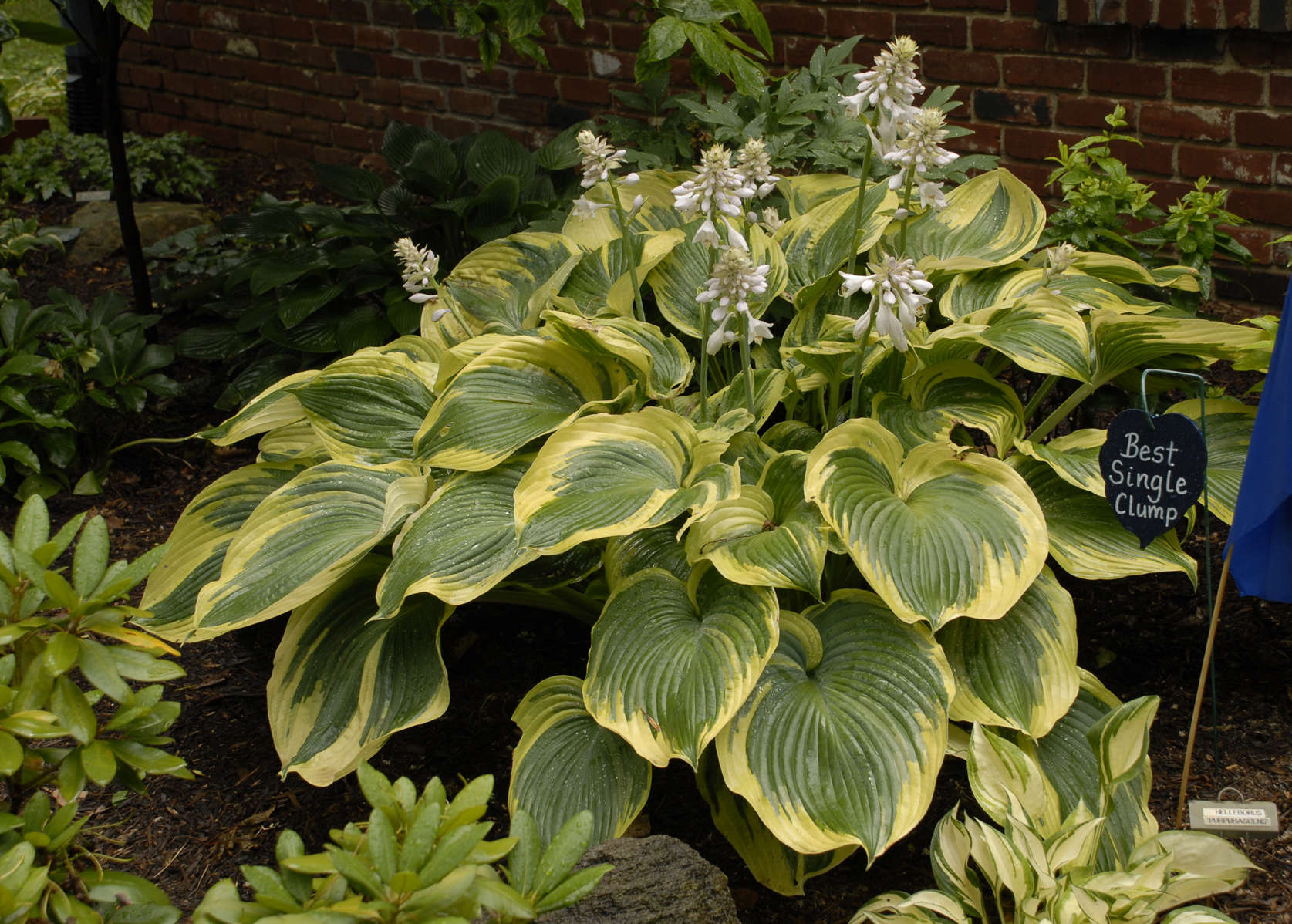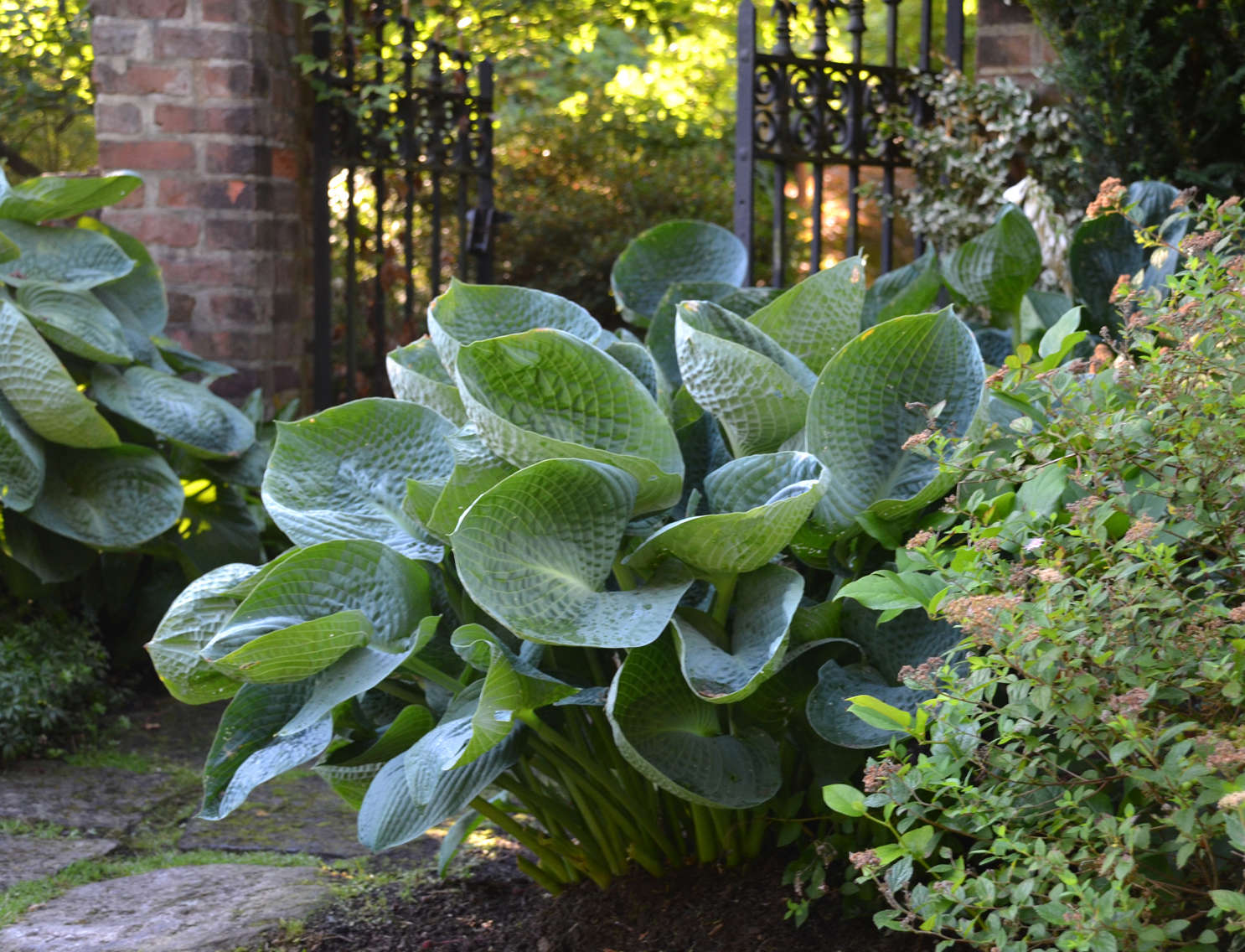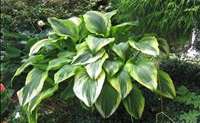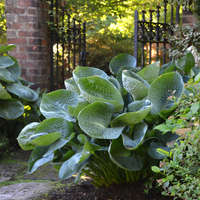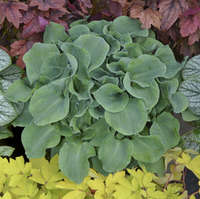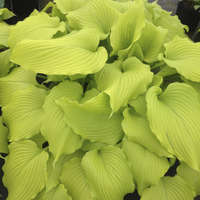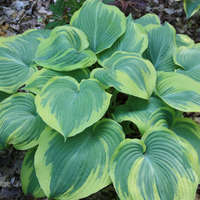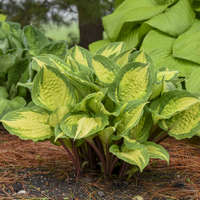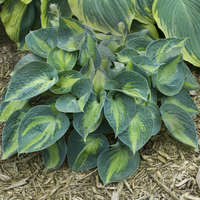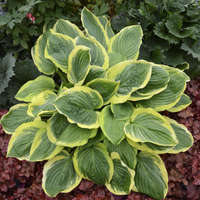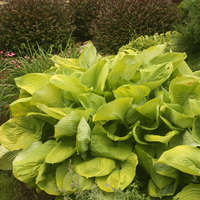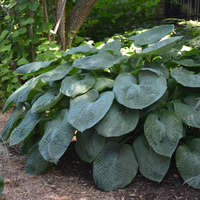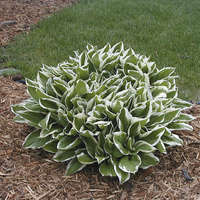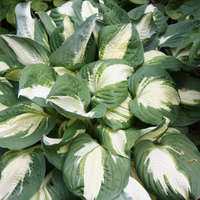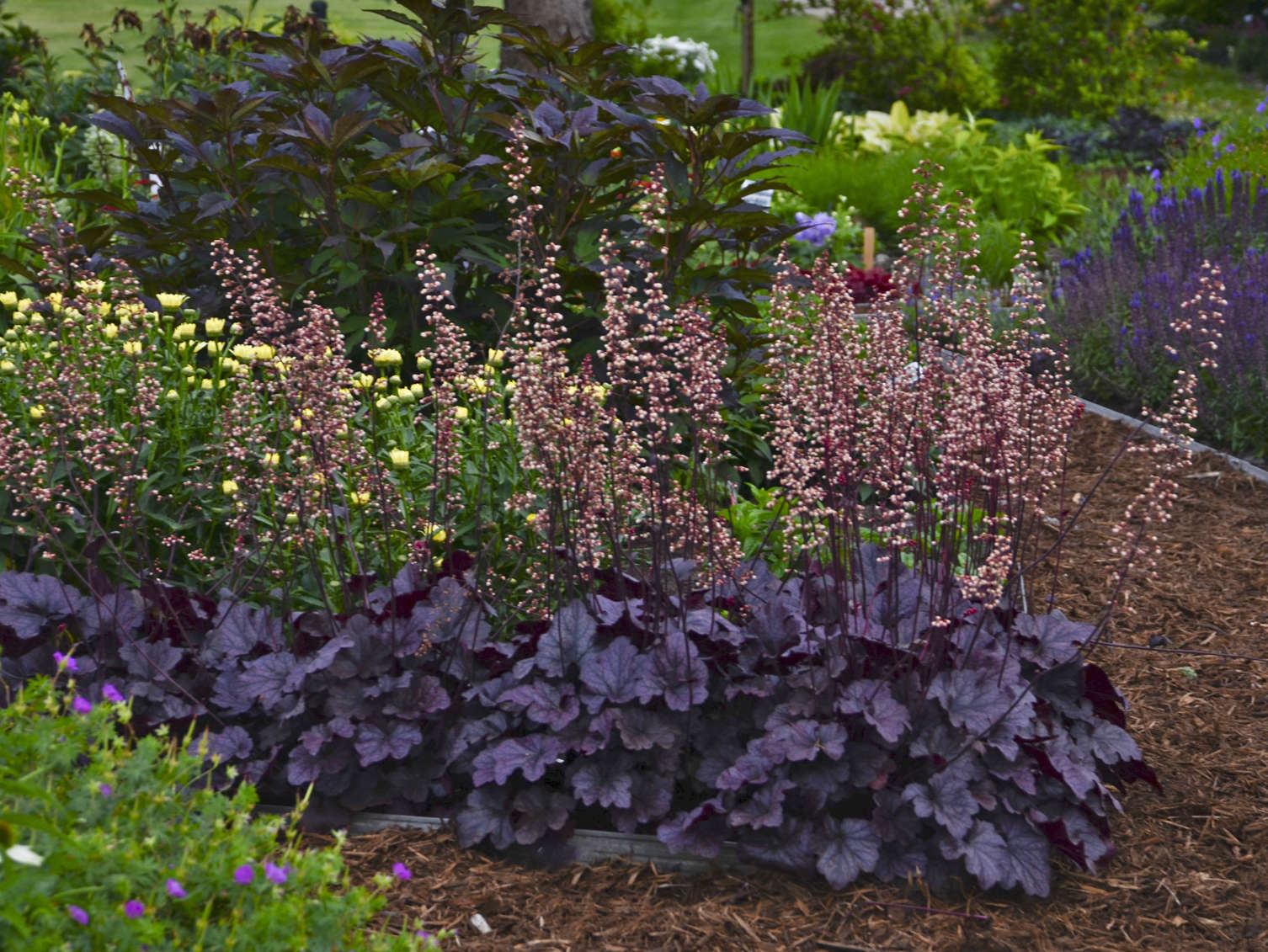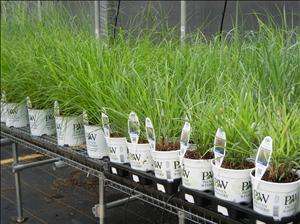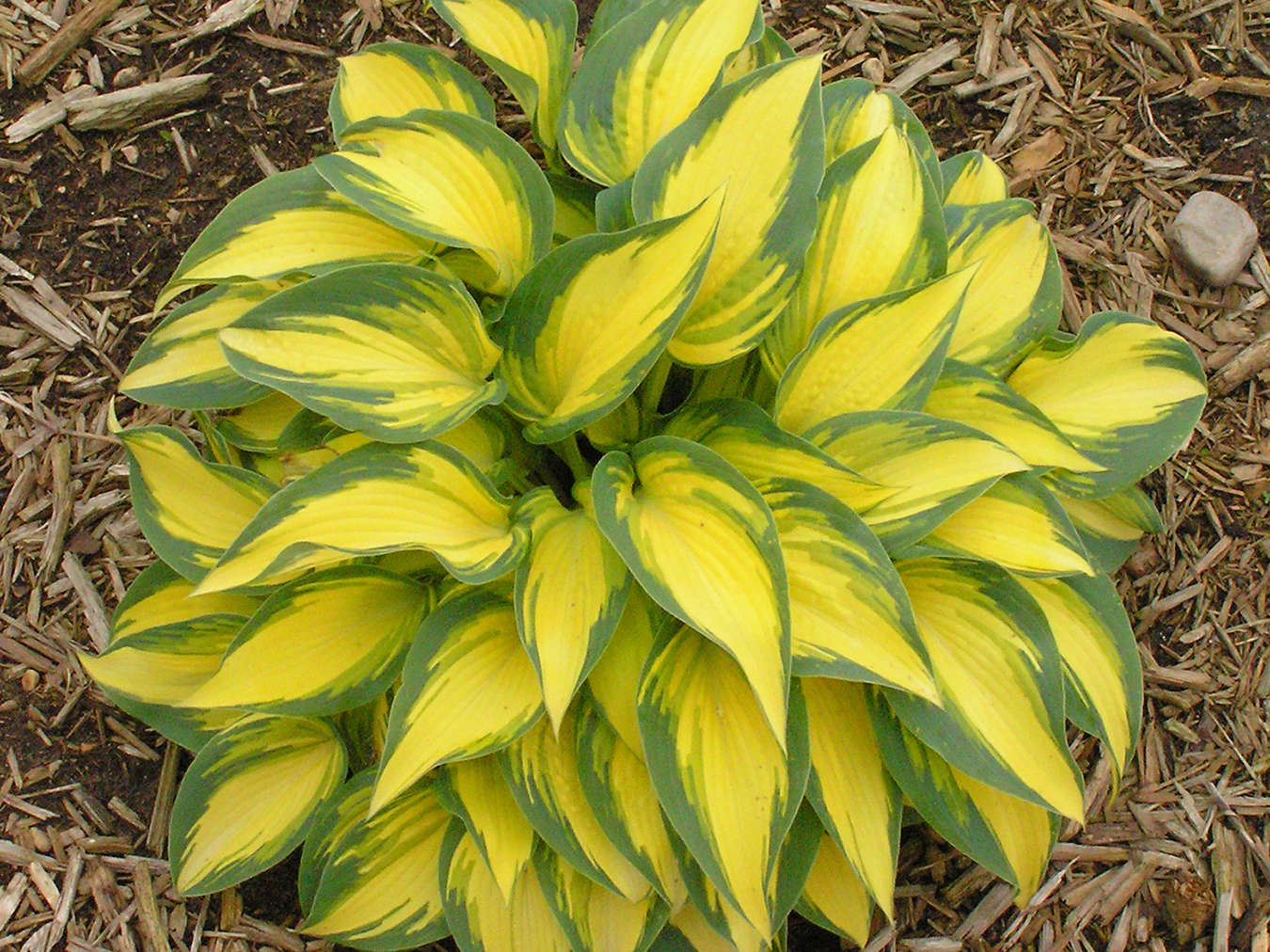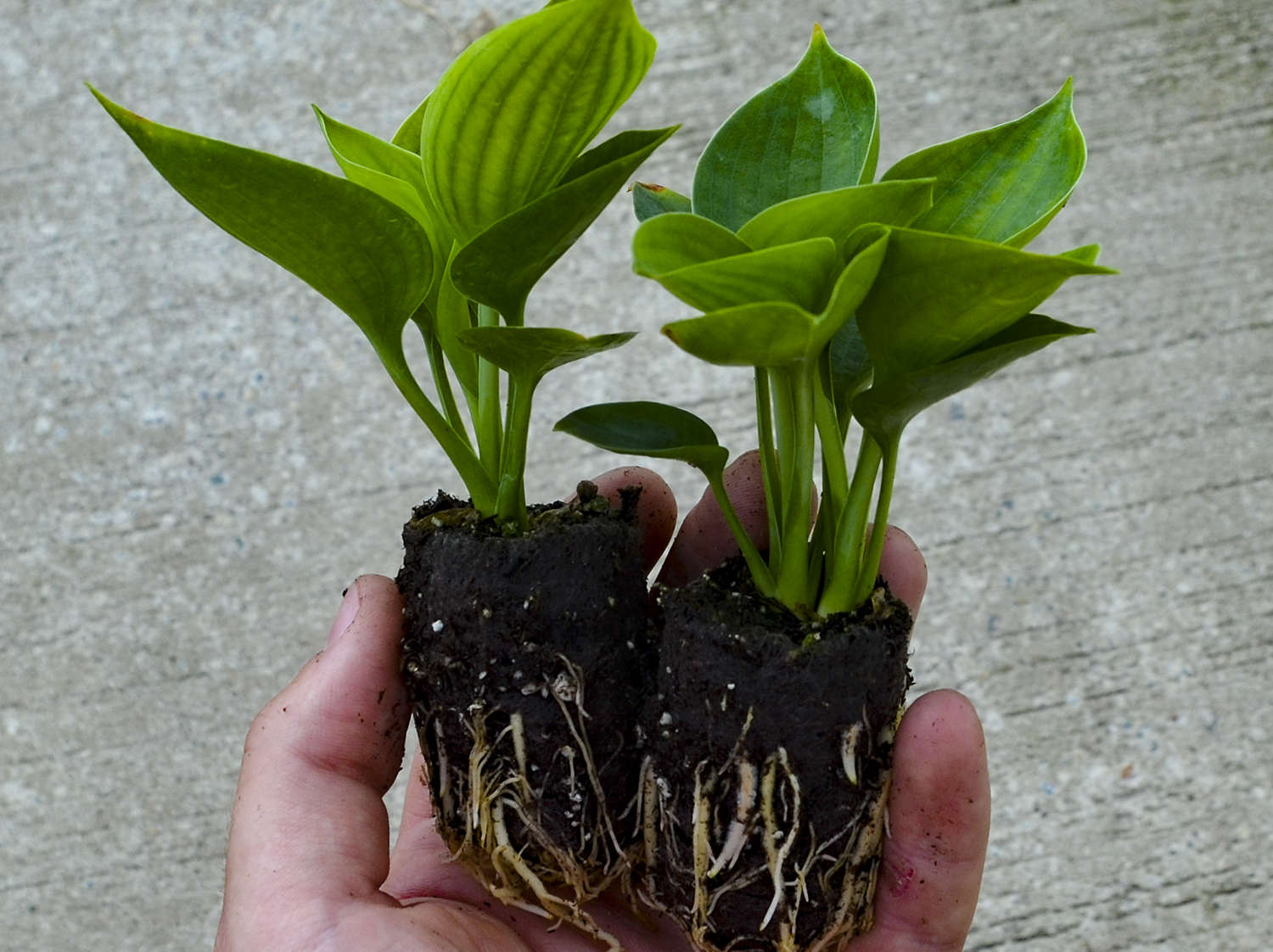All Hostas are NOT Created Equally
09/02/2014
By: Paul Pilon
With their ease of growth, variety of plant shapes and sizes available, and diversity of leaf colorations, hostas are one of the most desirable perennials for gardens with partial to full shade. In the landscape, the foliage can provide a bold presence while softening the appearance of well-defined areas.
Hostas form attractive mounds of basal foliage with leaves ranging in shape from narrow elliptic to very broad ovate or heart shaped. The leaf texture may be shiny, smooth, or puckered and consists of numerous colorations of yellow, white, greens to blue-green with and without distinct veining or variegation.
They produce lily-like, bell shaped, white, lilac, or purple colored flowers on stalks that rise above the basal foliage in midsummer. Cultivars of H. plantaginea parentage produce fragrant flowers which are great for attracting hummingbirds into the garden.
There are literally thousands of hosta cultivars, hybrids, and species to choose from. Though they are all hostas, they certainly do not all grow the same way. Given their diversity, it is beneficial to break them down into categories such as fast growers, late emergers, best finished sizes, crop timing for finished growers. This article provides listings of various categories of hostas which will prove handy for any grower producing or marketing hostas.
Shade Requirements
Although hostas are marketed as shade perennials, most of them do not grow as well in full shade as you might expect. Hostas are shade tolerant and will do well in varying amounts of shade, yet they still like to receive some sun during the day. In the landscape, pick shady areas with diffuse sunlight and avoid exposure to full sun in the afternoons.
During production, sites with 50 percent shade cloth are usually sufficient for most cultivars.
Hostas with blue foliage, such as the 2014 American Hosta Growers Hosta of the Year winner 'Abiqua Drinking Gourd', should be grown with more shade (70 percent shade cloth) to help them retain their leaf coloration throughout the season. Hostas with chartreuse or yellow foliage such as 'Dancing Queen' can typically tolerate more exposure for longer durations to direct sunlight.
Slow Spring Emergers
It is perfectly normal for hosta cultivars to emerge at significantly different times in the spring. Some varieties will emerge rather quickly, while others are slower to appear. There are several reasons why hostas re-emerge at various rates in the spring.
Hostas require a particular amount of cold temperatures for them to break dormancy; each cultivar has its own requirement regarding the length of vernalization it needs prior to spring emergence. Most hostas require 6 to 10 weeks of cold temperatures (below 35° F). Plants which have not received the appropriate amount of cold will take significantly longer to emerge.
Plant genetics also greatly affect spring emergence. Hosta cultivars with tokudama ('Abiqua Drinking Gourd') or fortunei ('Striptease') parentage generally emerge slower than varieties with montana('Aureomarginata'), plantaginea ('Sum and Substance'), sieboldiana ('Elegans') and undulata ('Albomarginata') parentage. Since most Hostas are sold as hybrids, it can be difficult to learn a cultivar's parentage in advance and the exact origins are often unclear. Growers learn over the years how their crops behave and plan accordingly.
During production it is helpful to group hostas by how quickly they emerge in the spring. Cultivars that emerge quickly can be placed in one environment and grown cooler while slow emerging cultivars can be placed in a warmer environment to promote faster emergence. When grown in this manner, all types of hostas can be marketed at approximately the same times.
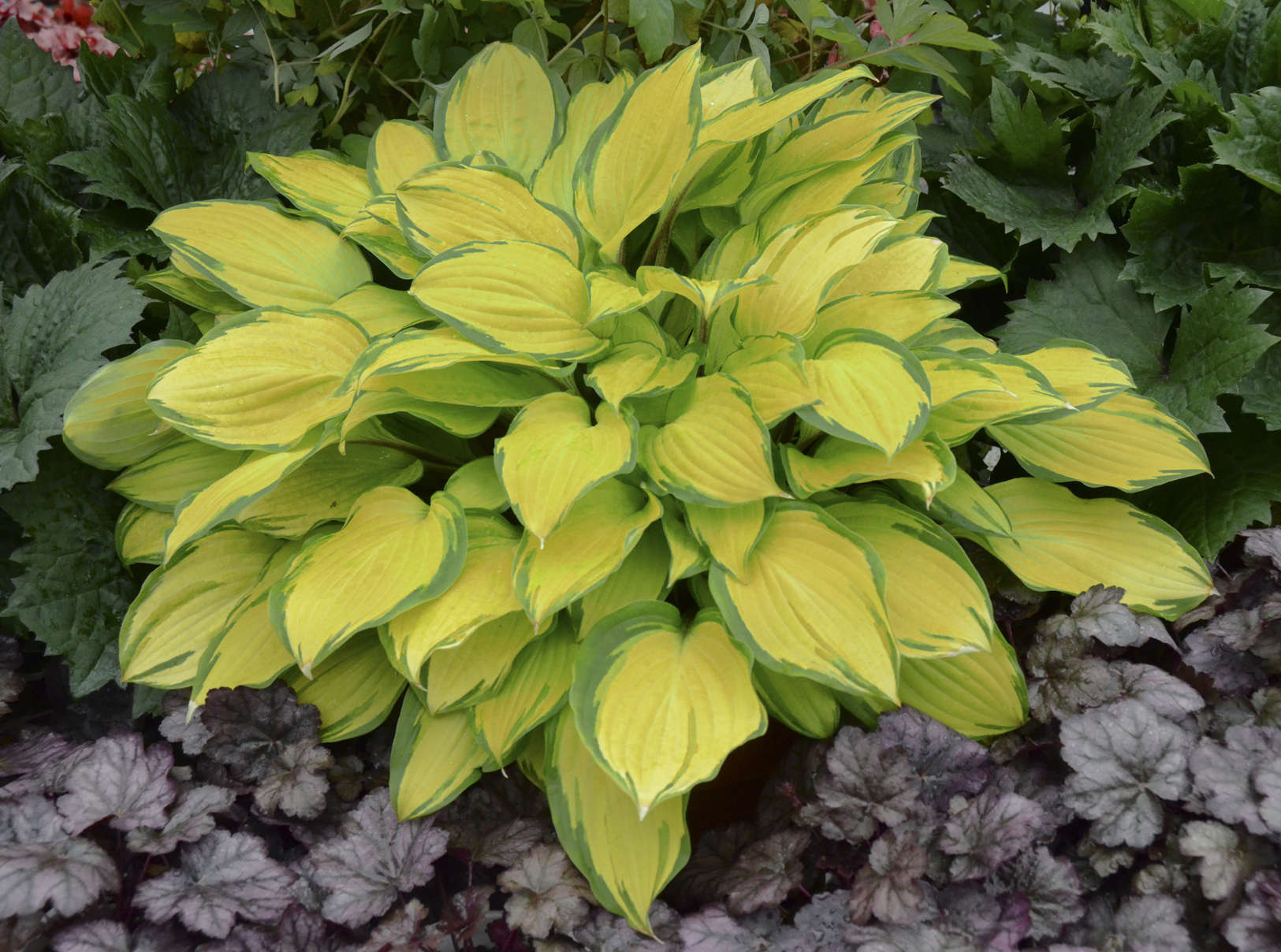
Despite its light coloration, Hosta ‘Island Breeze’ is a fast growing hosta that establishes its roots and fills out a pot quickly.
Fast vs. Slow Growers
Hosta cultivars grow at various rates; some grow quickly while others are slow. Types of hostas with slow growing habits usually encompass the miniature hostas (Examples: 'Alakazaam', 'Church Mouse', and 'Cherry Tomato'), tetraploids hostas (‘Rhino Hide’), and cultivars with lots of white coloration ('Dancing Stars'). Faster growing Hostas include 'Empress Wu', 'Sum and Substance', ‘Vulcan’, ‘Island Breeze’, and ‘Royal Wedding’.
Changes in Hosta Appearance
Growers should note that hostas that have not yet been vernalized often appear different than more mature plants which have undergone a cold treatment. Young, non-vernalized plants will often not display their true variegation patterns, coloration, and leaf texture and/or morphology which are characteristic of each cultivar. Following vernalization and through successive years, the plants will display more of their true characteristics.
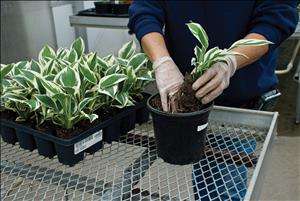
Hosta plugs should be potted up the summer prior to sales to allow adequate time for rooting and bulking.
Container Sizes and Crop Timing

Hosta plugs should be potted up the summer prior to sales to allow adequate time for rooting and bulking.
To produce the highest quality hostas, it is important to allow adequate time for rooting and bulking. In most cases, it is best to pot up hosta plugs during the summer (June or July is ideal) prior to spring sales. Hostas planted in this manner develop more eyes, have a better developed root system, and display more mature characteristics than plants grown under shorter time frames.
Miniature hostas are best produced in small quart sized containers. Hostas of small to medium stature can be easily produced in quart, trade gallon, and premium gallon containers. Large and giant sized hostas are well suited for production in premium gallon or two gallon containers.
Finishing times will vary from one cultivar to the next. In general, it takes 8 to 10 weeks to root out one gallon containers of hostas planted from 20ct plugs or 16 to 20 weeks to root out one gallon sized containers using non-vernalized 72ct plugs. Hostas can be grown from bare root planted in the late spring or early summer before they are to be sold or potted in the late winter or early spring while they are dormant.
Summary
Understanding the differences between cultivars can help growers improve their success with producing hostas. With the diversity of leaf colorations, plant habits, flowering characteristics, and ease of growth, hostas will likely remain one of the most popular perennials of the 21st century.
Paul Pilon is a horticultural consultant, owner of Perennial Solutions Consulting (www.perennialsolutions.com) and author of Perennial Solutions: A Grower’s Guide to Perennial Production. He can be reached at paul@perennialsolutions.com or (616) 366-8588.
